Disclosure: This article contains affiliate links. We may earn a commission from purchases at no extra cost to you, which helps our travel content.
The morning mist hangs low over the emerald valleys of Kodiak Island as I crouch behind a fallen log, my camera poised and ready. My heart pounds against my chest—not from fear, but from pure, electric anticipation. Just 40 meters away, a massive Kodiak brown bear emerges from the rushing stream, water cascading from her thick fur as she clutches a writhing salmon between her powerful jaws. I hold my breath and press the shutter. Click. This moment, this raw display of nature's majesty, is exactly why I traveled to the remote wilderness of Alaska—and why you should too.
Preparing for the Ultimate Wildlife Photography Expedition
When I decided to photograph Kodiak's legendary brown bears—the largest subspecies of brown bear on earth—I knew this wouldn't be your standard luxury getaway. This is expedition luxury: where comfort meets wilderness, and exclusivity means access to untouched natural wonders rather than velvet ropes.
I spent weeks researching the right guides and accommodations, eventually settling on a private lodge experience that balanced proximity to bear habitats with creature comforts. The key to success lies in preparation—both mental and material. Before boarding my flight to Kodiak, I invested in a telephoto lens that proved absolutely essential for capturing intimate bear moments without disturbing their natural behavior.
My days in Madrid preparing for Alaska's unpredictable weather led me to purchase a waterproof camera rain cover that saved my equipment during several unexpected downpours. Trust me when I say that Kodiak's weather changes faster than a bear can snatch a salmon—be prepared for all conditions, often within the same hour.

💡 Pro Tips
- Book your bear photography expedition at least 6 months in advance as the best guides have limited availability
- Pack both waterproof and breathable layers—Kodiak's weather is notoriously unpredictable
- Consider renting high-end telephoto lenses locally if you don't want to travel with heavy equipment
Choosing Your Base: Luxury Lodges vs. Wilderness Camps
After experiencing both options during my week in Kodiak, I can confidently say there's no wrong choice—only different experiences. My journey began at Kodiak Brown Bear Center, an exclusive lodge accessible only by floatplane that limits guests to just six at a time. The indigenous Alutiiq-owned property offers an intimate connection to both the land and its cultural heritage.
Midway through my trip, I switched to a wilderness glamping experience with a private guide. While less conventionally luxurious, these camps position you closer to prime photography locations for dawn and dusk golden hours—when bears are most active.
Regardless of accommodation style, proper gear is non-negotiable. My satellite communicator provided peace of mind in areas without cell service. For those long waits in photography blinds, I relied on my heated vest to stay comfortable during cool mornings without bulky layers that might restrict movement during critical photo moments.
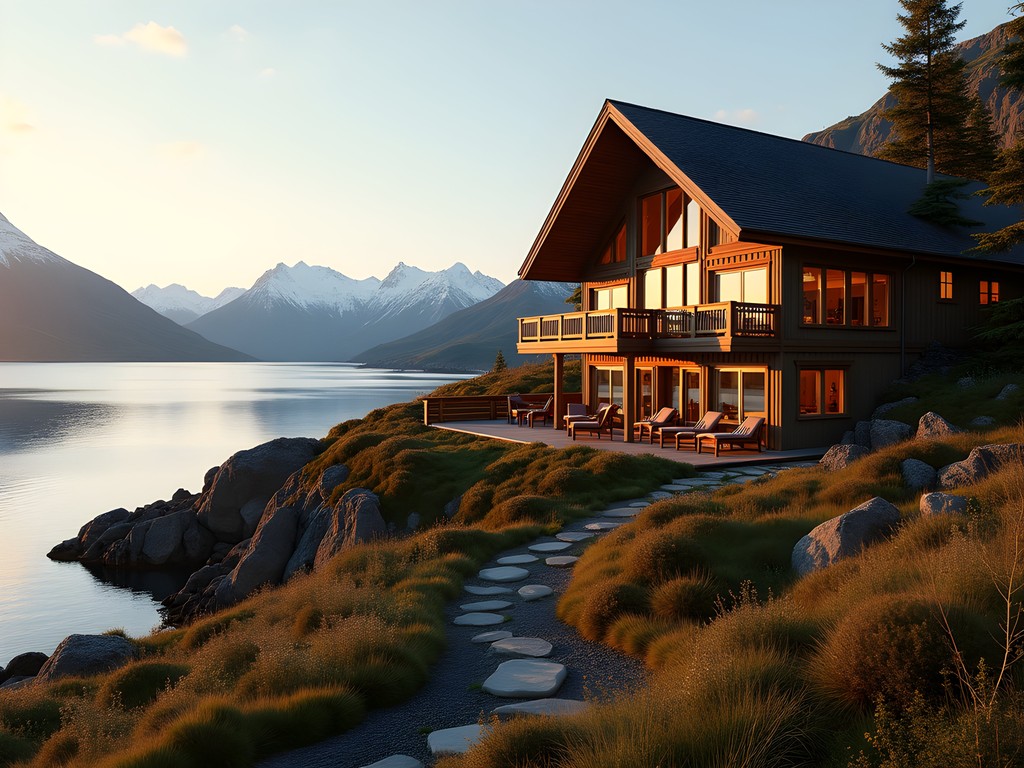
💡 Pro Tips
- Choose accommodations based on your photography goals—lodges offer comfort but wilderness camps put you closer to dawn/dusk action
- Pack high-protein snacks for long photography sessions where returning to the lodge isn't practical
- Request rooms with charging stations for multiple camera batteries and devices
The Art of Bear Photography: Techniques and Ethics
The difference between a tourist snapshot and a compelling wildlife photograph often comes down to patience, preparation, and respect. My journalism background taught me to observe before acting, and this principle served me well in Kodiak's wilderness.
My guide, Tom—a former National Geographic photographer with 25 years of experience—taught me to read bear behavior and anticipate movements. We'd often sit motionless for hours in photography blinds, waiting for the perfect moment when a mother bear would teach her cubs to fish or when two subadults would engage in play-fighting.
Ethical wildlife photography means prioritizing animal welfare above getting 'the shot.' We maintained minimum distances of 100 meters unless in designated photography blinds, using my telephoto lens to create intimate portraits without disturbing natural behaviors. I protected my expensive equipment from the elements with a waterproof camera backpack that proved invaluable during sudden rainfall and while navigating boggy terrain.
For those magical low-light moments at dawn when bears are most active, my carbon fiber tripod provided essential stability for slow shutter speeds. The investment was significant, but the resulting images—silhouettes of bears fishing against the sunrise—made it worthwhile.
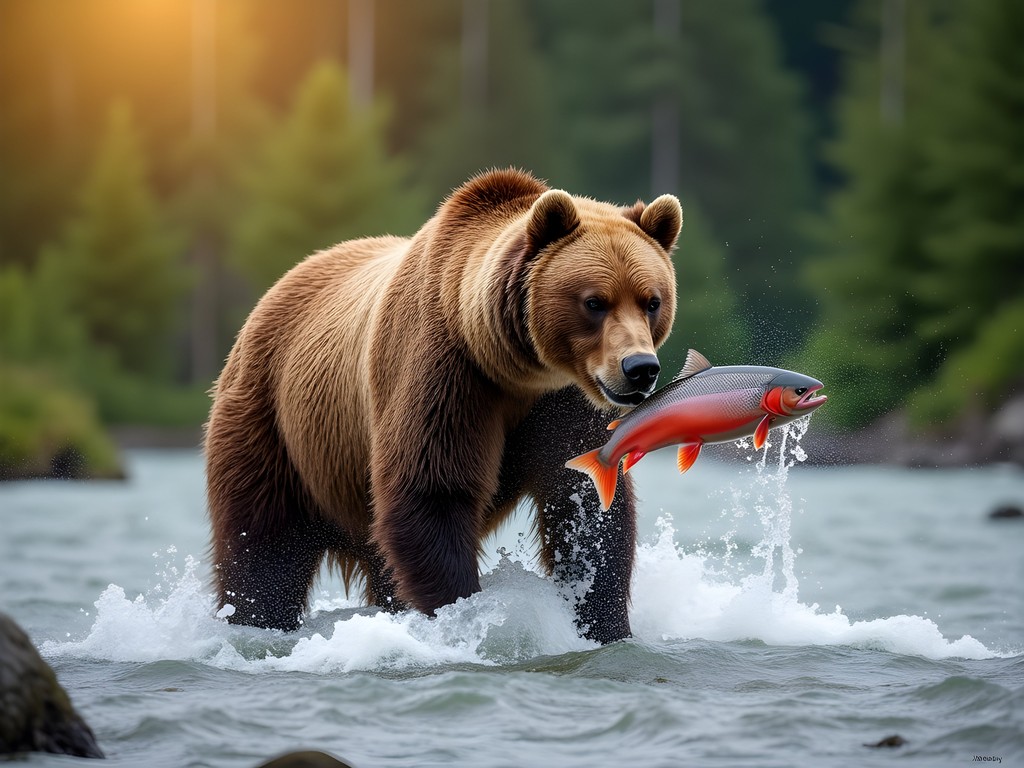
💡 Pro Tips
- Learn to read bear body language—flattened ears and direct staring indicate stress or aggression
- Use silent shutter modes when possible to avoid disturbing wildlife
- Focus on capturing behavior and interaction rather than just the animal itself
Beyond Bears: Kodiak's Other Photographic Treasures
While Kodiak's brown bears are undeniably the stars of the show, the island offers a wealth of other photographic opportunities that shouldn't be overlooked. After five intensive days of bear photography, I dedicated time to capturing Kodiak's broader ecosystem.
The island's coastal areas provide stunning opportunities for photographing sea otters, harbor seals, and diverse seabird colonies. One afternoon, I chartered a small boat to photograph bald eagles fishing—an experience that resulted in some of my most dynamic action shots of the trip.
Kodiak's landscapes deserve equal attention. The juxtaposition of snow-capped mountains against verdant valleys creates dramatic compositions, especially when low-hanging clouds create mystical atmospheres. During these landscape expeditions, my polarizing filter proved essential for managing reflections and enhancing the vibrant greens and blues that dominate Kodiak's natural palette.
For those magical moments when wildlife appears in perfect landscape settings, I relied on my quick-access camera holster that allowed me to transition from hiking to shooting in seconds—crucial when a fox suddenly appeared on a ridgeline or when the perfect rainbow formed over the bay.
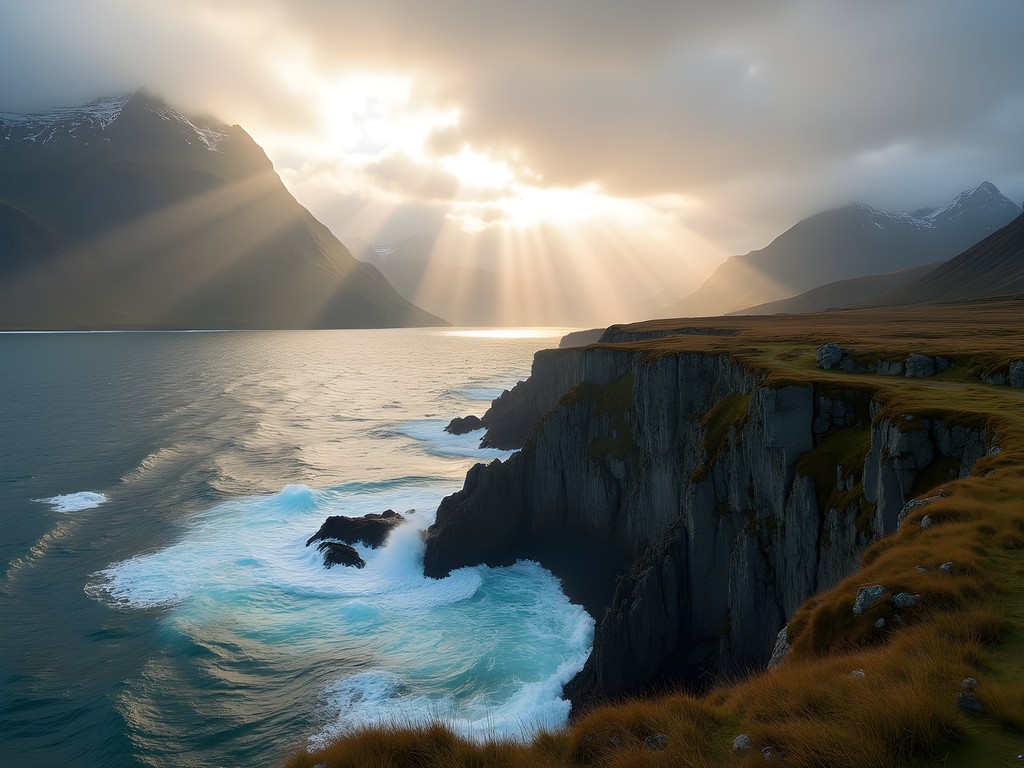
💡 Pro Tips
- Schedule at least one boat excursion to photograph marine wildlife and coastal landscapes
- The Fort Abercrombie State Historical Park offers accessible wildlife viewing for photographers with mobility limitations
- Visit the Kodiak National Wildlife Refuge Visitor Center for insider tips on recent wildlife sightings
Final Thoughts
As my floatplane lifted off from Kodiak's crystal waters on my final day, I scrolled through my camera roll—over 3,000 images capturing a week of extraordinary wildlife encounters. While I'd come for the bears, I left with something far more valuable: a profound connection to one of the planet's last truly wild places.
Wildlife photography in Kodiak isn't merely about capturing beautiful images; it's about bearing witness to an ecosystem that remains largely as it has been for thousands of years. It's a privilege that comes with responsibility—to tread lightly, to observe respectfully, and to share these experiences in ways that inspire conservation.
Yes, this expedition required investment—both financial and personal. The remoteness demands advance planning, the weather tests your patience, and the wildlife operates on its own unpredictable schedule. But for those willing to embrace the uncertainty and occasional discomfort, Kodiak offers photographic opportunities that simply don't exist elsewhere. When you find yourself holding your breath as a 1,500-pound bear walks into perfect golden light, you'll know that every moment of preparation was worth it. Kodiak doesn't just change your portfolio; it transforms your perspective.
✨ Key Takeaways
- Invest in quality telephoto lenses and weather protection for your gear
- Choose accommodations based on photography goals rather than just comfort
- Practice ethical wildlife photography by maintaining distance and respecting animal behavior
- Allow flexibility in your schedule—wildlife operates on its own timeline
- Look beyond bears to capture Kodiak's diverse ecosystem and dramatic landscapes
📋 Practical Information
Best Time to Visit
July to September
Budget Estimate
$8,000-15,000 for a week (including specialized guides, accommodations, and floatplane transfers)
Recommended Duration
7-10 days
Difficulty Level
Challenging




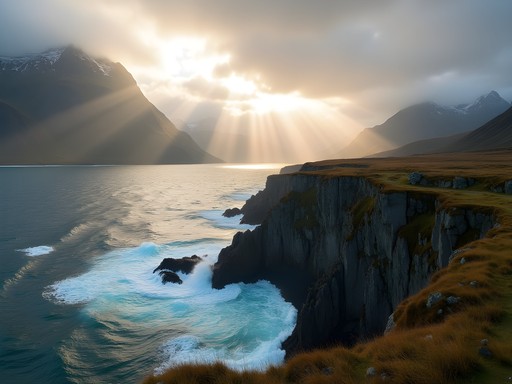






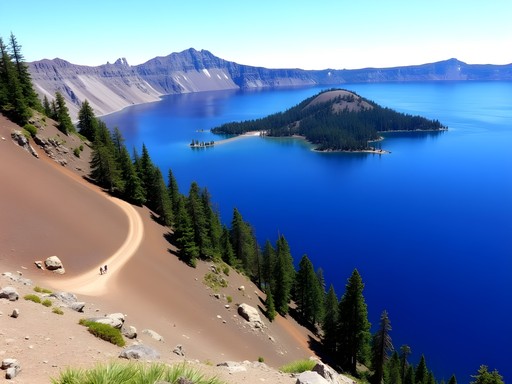


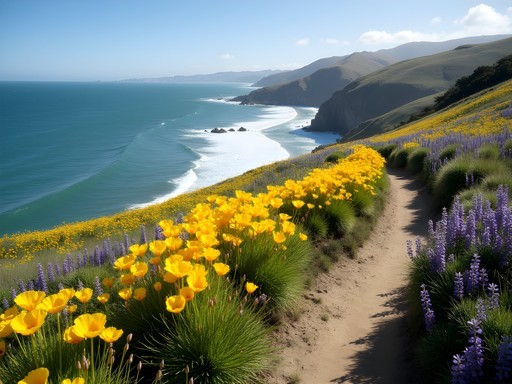
Comments
photodiver
Just got back from Kodiak myself and your post captures the experience perfectly! I chose one of the wilderness camps you mentioned and while it was definitely rustic, the proximity to the bears was unmatched. Our guide taught us to recognize individual bears by their markings and behaviors, which added so much depth to the photography experience. One thing I'd add for anyone planning a trip - the weather changes FAST there. I had several shoots nearly ruined by sudden fog rolling in. Always plan for extra days as backup. Also, the section on ethical photography practices is so important. I witnessed another photographer getting dangerously close to a mother and cubs for a shot. The guide intervened, but it was a tense moment that could have ended badly.
explorevibes
Is July a good time to visit or should I wait until August/September for better bear viewing?
Jasmine Palmer
I'd recommend late August through September for the salmon runs - that's when bear activity is at its peak. July can be good too, but you might not see as many fishing scenes.
Raymond Hassan
Agree with Jasmine. September also tends to have fewer tourists, which means more intimate wildlife encounters. The autumn colors add another dimension to your photographs as well.
George Hayes
Jasmine, your post brought back so many memories! When we took our kids (14 and 16) to Kodiak last summer, they were absolutely mesmerized. We saw a mother with two cubs fishing in a stream just like your third photo. The guides taught us about keeping our voices low and movements minimal - such an important lesson for the kids about respecting wildlife. One tip for anyone planning a trip: we found our telephoto lens absolutely essential. The reach meant we never had to encroach on the bears' space. Your section on 'Beyond Bears' is spot on too - those sea otters are incredibly photogenic if you can catch them!
winterninja
OMG THESE PHOTOS ARE INCREDIBLE!!! 🐻📸 I've never seen bear pics this good! Bucket list trip for sure!
adventuremood
Planning a trip next summer! Which lodge did you find best for photography opportunities? Budget isn't my main concern, but access to the bears is.
George Hayes
Not Jasmine, but I took my family to Kodiak Wilderness Lodge last year and it was phenomenal. The guides know exactly where to position you for the best light and bear activity. Worth every penny if photography is your priority!
adventuremood
Thanks George! Adding that to my shortlist.
Raymond Hassan
Excellent write-up, Jasmine. I was in Kodiak last summer and can confirm that the ethics section is particularly important. I observed several photographers getting dangerously close to bears for 'the perfect shot.' Your approach of using longer lenses and maintaining distance is exactly right. I'd add that understanding bear behavior patterns before going is critical - knowing when to back off can be lifesaving. Did you find the early morning mist challenging for exposure settings? I struggled with balancing ISO and shutter speed in those conditions.
photolover
Those bear shots are absolutely stunning! What lens were you using?
Jasmine Palmer
Thanks! I was primarily using a 100-400mm with a 1.4x extender. Gives you that extra reach while maintaining a safe distance.
photolover
Perfect setup! Been debating whether to invest in an extender. This convinced me!
smartchamp
When's the best time of year to see the bears fishing for salmon? Planning a trip for next year!
Jasmine Palmer
Late July through September is prime salmon run time! I went in early August and it was perfect. The bears were very active at the falls and along the streams.
starmood
Just got back from Kodiak last week and your post captures the experience perfectly! For anyone planning a trip, I'd add that July-August is peak season (crowded but lots of bears), while June and September offer fewer people but still good sightings. I'm a beginner photographer and was worried about getting decent shots, but our guide positioned us perfectly. Even with my basic setup, I got some incredible photos. The bears were so focused on fishing they barely noticed us. One thing I wish I'd known: the bugs can be INTENSE in some areas. I was grateful for my bug hood and repellent. Also, the weather changes by the minute - I'd be in t-shirt one moment and reaching for my down jacket 20 minutes later. Thanks for sharing your beautiful photos and responsible wildlife viewing tips, Jasmine!
moonnomad
Thanks for the seasonal tips! Did you stay at one of the lodges Jasmine mentioned?
starmood
We split our time between Kodiak Brown Bear Center (amazing but $$$) and a small B&B in town, doing day trips from there. Worked well for our budget!
wildzone
What lens did you use for those close-up bear shots? The detail is incredible!
Jasmine Palmer
I used a 200-500mm f/5.6 for most of the bear shots. It gives that nice compression while keeping a safe distance. For the landscape shots, mostly my trusty 24-70mm f/2.8.
photodiver
That 200-500 is a beast! I use the telephoto zoom for wildlife and it's been fantastic for similar situations. Did you have any issues with weight while hiking to photo locations?
Jasmine Palmer
The weight was definitely a challenge on longer hikes! I invested in a really good camera harness which made a world of difference.
Venture X
Premium card with 2X miles, $300 travel credit, Priority Pass